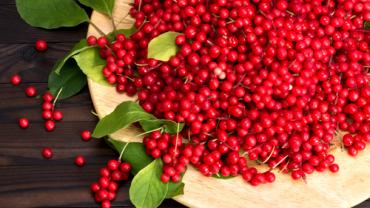
When listing the most important organs in the body—the ones that do the lion’s share of keeping us alive—people will typically rattle off the heart and brain first. After all, if the heart stops beating, the other organs can’t keep going on their own, and if the brain is dead, someone might technically be “alive,” but it isn’t really much of a life. But the liver tends to get overshadowed by these other two, yet it’s no less important to the healthy functioning of the entire rest of the body.
Considering the rates of cardiovascular disease in the industrialized world, and the growing economic and emotional burdens of Alzheimer’s disease, people are right to have the heart and brain come to mind first when thinking about health. But cases of severe liver disease continue to grow, with 3.9 million adults living with liver disease in the US alone, and over 38,000 deaths annually from chronic liver disease. In 2007, the CDC ranked liver disease as the 12th leading cause of death in the US. With more and more people being diagnosed with NAFLD, hepatitis, cirrhosis and liver cancer, healthcare professionals are on the lookout for natural compounds that can help patients support liver health.
One candidate that deserves consideration is Schisandra chinensis (also called Chinese magnolia vine), the fruit of which is called magnolia berry or five-flavor fruit. The fruit (berries) is the part of the plant typically used in Chinese and botanical medicine, and in Korea it is sometimes enjoyed as a tea. The plant is native to northeastern China, Korea, Japan, and the eastern part of Russia. (Russian scientists were among the first to document the broad applications of Schisandra.)
Schisandra has potent protective effects on the liver, including increasing cytochrome P450 activity, decreasing liver enzymes, and accelerating the proliferation of hepatocytes, which is instrumental for liver repair and regeneration. Chronic alcohol abuse is one of the primary causes of liver damage. In a rat study, treatment with triterpenoid compounds extracted from Schisandra chinensis was shown to reduce alcohol-induced oxidative stress in the liver, and to have a beneficial effect on liver function and histological changes.
Of course, excessive alcohol consumption isn’t the only contributor to liver damage. Another biggie is the obesogenic dietary landscape we live in today. The combination of high carb and high fat—especially with much of that fat coming from omega-6-rich seed oils—takes a toll on the liver. (Fat deposited in the liver is likely one of the early steps in the pathogenesis of type-2 diabetes.) The buildup of fat in the liver of non-drinkers, or those who consume alcohol only moderately, is so common now that we know it by its own abbreviation: NAFLD, for non-alcoholic fatty liver disease. A low-carb diet can be a frontline intervention for reversing fatty liver, but Schisandra may be a helpful adjunct. In mice in vivo, and in cultured human liver cells in vitro, Schisandra extract was shown to inhibit endoplasmic reticulum stress, which is associated with development of NAFLD.
In a mouse model of NAFLD, compared to untreated mice with fatty liver, fatty liver mice treated with a Schisandra polysaccharide extract showed reductions in serum triglycerides, total cholesterol, LDL-C, ALT and AST of 31.3%, 28.3%, 42.8%, 20.1% and 15.5%, respectively, and HDL-C increased by almost 27%, with a 28% reduction in hepatic triglycerides—not bad! Other mouse studies confirm the lipid-lowering effects of Schisandra, attributing this in part to inhibition of mRNA expression of genes involved in lipogenesis, such as fatty acid synthase and acetyl-CoA carboxylase, as well as inhibition of HMG-CoA reductase—the enzyme targeted by statin drugs.
Beyond alcohol abuse and the detrimental effects of the modern diet, a third major factor contributing to liver damage is acetaminophen toxicity. (In fact, overdose of acetaminophen is the most common cause of acute liver failure.) In a mouse model of acetaminophen-induced hepatotoxicity, acute treatment with Schisandra chinensis (3 hours after acetaminophen administration) protected liver mitochondria and cell viability. Extracts from other Schisandra species have also shown powerful effects against acetaminophen damage: a mouse study showed that pretreatment with various lignans extracted from Schisandra fructus prevented the depletion of hepatic glutathione, and reduced the activity of enzymes involved in detoxification/bioactivation of acetaminophen, resulting in reduced formation of the more toxic intermediate, NAPQI (N-acetyl-p-benzoquinone imine). Extracts from Schisandra sphenanthera have been shown to increase antioxidant capacity, offering a degree of protection against hepatotoxicity, evidenced by reducing the increase in ALT and AST, and preserving hepatic glutathione compared to untreated mice.